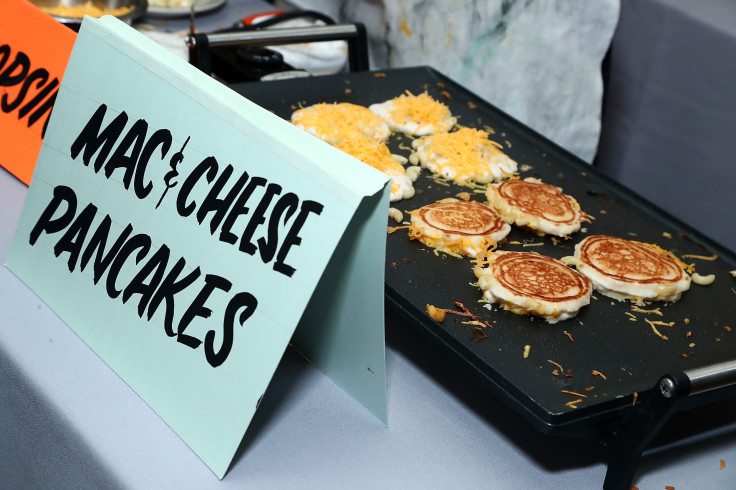National Pancake Day 2021: 15 Crazy Facts About The Fluffy Breakfast Favorite
It's National Pancake Day! In honor of the holiday, here are 15 facts about the beloved food that's not just for breakfast.
1. They're as ancient as Rome.
The very first pancakes were made in ancient Rome, but they weren't the type we eat today. Made out of simple, fried concoctions of milk, flour, eggs and spices, these ancient pancakes were called "Alita Dolcia," which means "another sweet" in Latin.
2. Southerners share a love for it.
In the United States alone, Southerners make up most of the pancake consumption -- amounting to 32.5%
3. Three names for the same day.
National Pancake Day is also known as Shrove Tuesday or Pancake Tuesday. As the holiday lands on the eve of Lent, it offers a good opportunity to use up any stocks left of food forbidden during this time -- jam and syrup being the most popular among them.
4. There is such a thing as pancake races.
The all-female pancake race originated in the small town of Olney, England, and was said to have been inspired by a harried housewife. Legend has it that the housewife arrived at church one Shrove Tuesday still clutching her frying pan, complete with the pancake. Soon enough, the race became an international event 1950, with the Olney racers competing with the women from Liberal, Kansas.
5. The world's largest pancake weighed more than a hippopotamus.
With a diameter reaching about 49 feet, the world's largest pancake was made by the Co-operative Union, Ltd. in Manchester, England, and weighed 6,614 pounds -- heavier than an adult-size hippo! And yes, the giant breakfast marvel was edible.
6. There is a pancake that costs $200.
A restaurant in Manchester named Opus has created the world's most expensive pancake -- costing about $200 each. The pricey pancake features Madagascan vanilla pods and a 23-carat edible gold leaf, and is served with a jelly named Dom Perignon and organic strawberries.
7. In Sweden, they serve pancakes made of pork blood.
If you order Blodplättar in Sweden, you'll be served a pancake made of whipped pork blood, water or pilsner, flour and eggs. Although it seems unorthodox to some, Blodplättar is pretty popular also in countries such as Finland, Estonia, and Norway!

8. All for the love of maple syrup.
The United States produced a whopping 3.17 million gallons of maple syrup this year -- an amount that is actually 10% less than what it produced the previous year.
9. Mouse-shaped pancakes are a thing.
Frontierland's River Belle Terrace serves pancakes in the shape of Mickey Mouse-- a quirky way to make customers enjoy the food staple even more.
10. Pancakes weren't always as flat as, well, pancakes today.
During the 15th century, pancakes were much thicker than those we have in present time. People also would add spices for decadence. It wasn't until the 18th century when French cooking introduced the ] pancakes we know today -- weighing lighter and thinner.
11. First one to toss the pancake gets a groom!
During Pancake Day in Ireland, girls would be given time to make their batter, and the eldest, unmarried girl would then be made to toss the first pancake. Success would mean that the girl would get married within the year.
12. The highest pancake toss occurred 31 feet from the ground.
Dominic Cuzzacrea holds the record for flipping a pancake into the air 31 feet from the ground -- the highest in the world.
13. Scotland has special oatcakes called Bannocks.
Made using oatmeal, eggs and salt, Bannocks are special oatcakes made in Scotland. It is believed that if an unmarried person eats them, they would marry within the year.
14. Don't bother setting the record of eating the most pancakes.
If you break the world record of eating the most pancakes, you still wouldn't be included in the "Guinness World Records" book -- because it isn't included in the categories.
15. Potato pancakes are fried in oil.
The traditional pancakes served during Hanukkah are fried in oil to remember the miraculous oil lamp that the Jewish holiday celebrates.
© Copyright IBTimes 2025. All rights reserved.





















